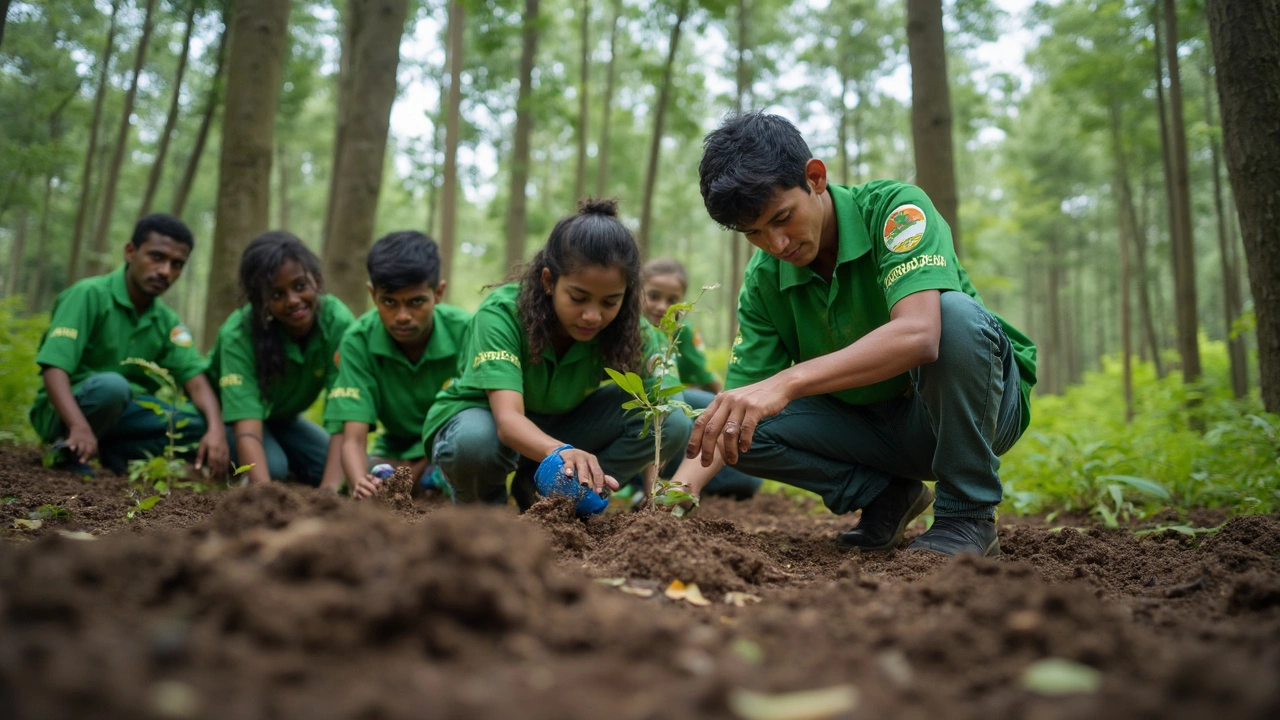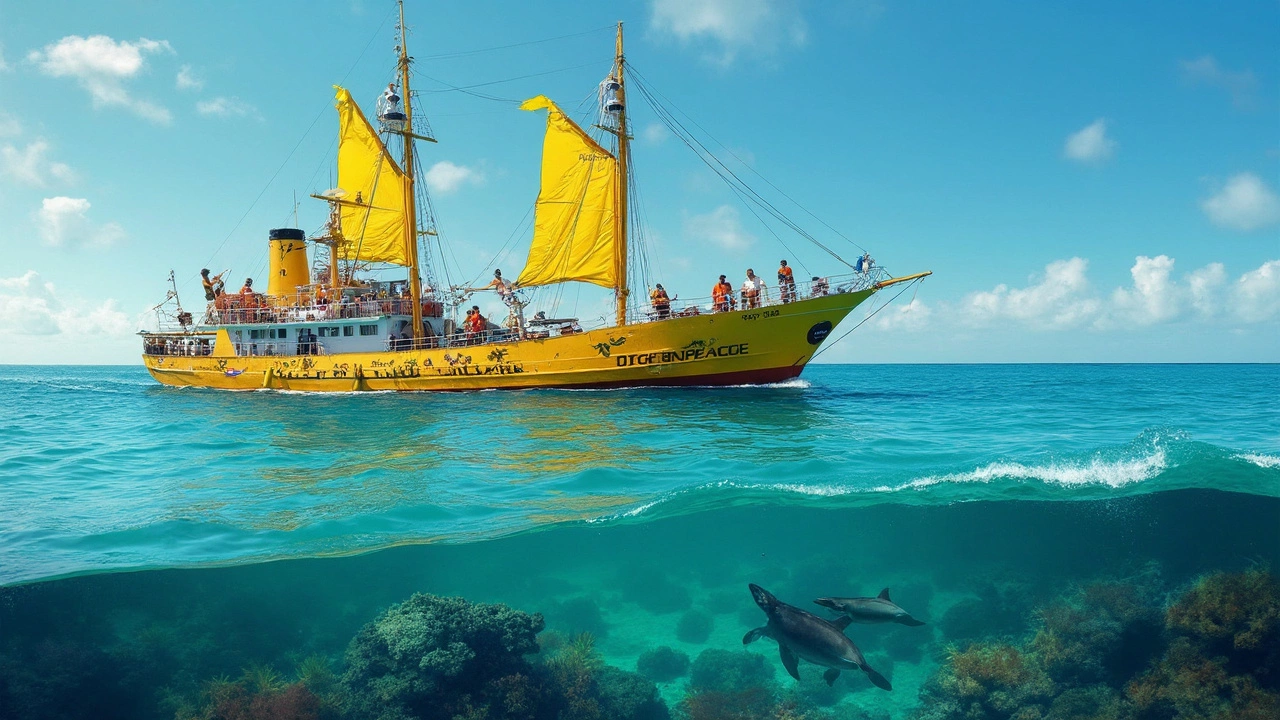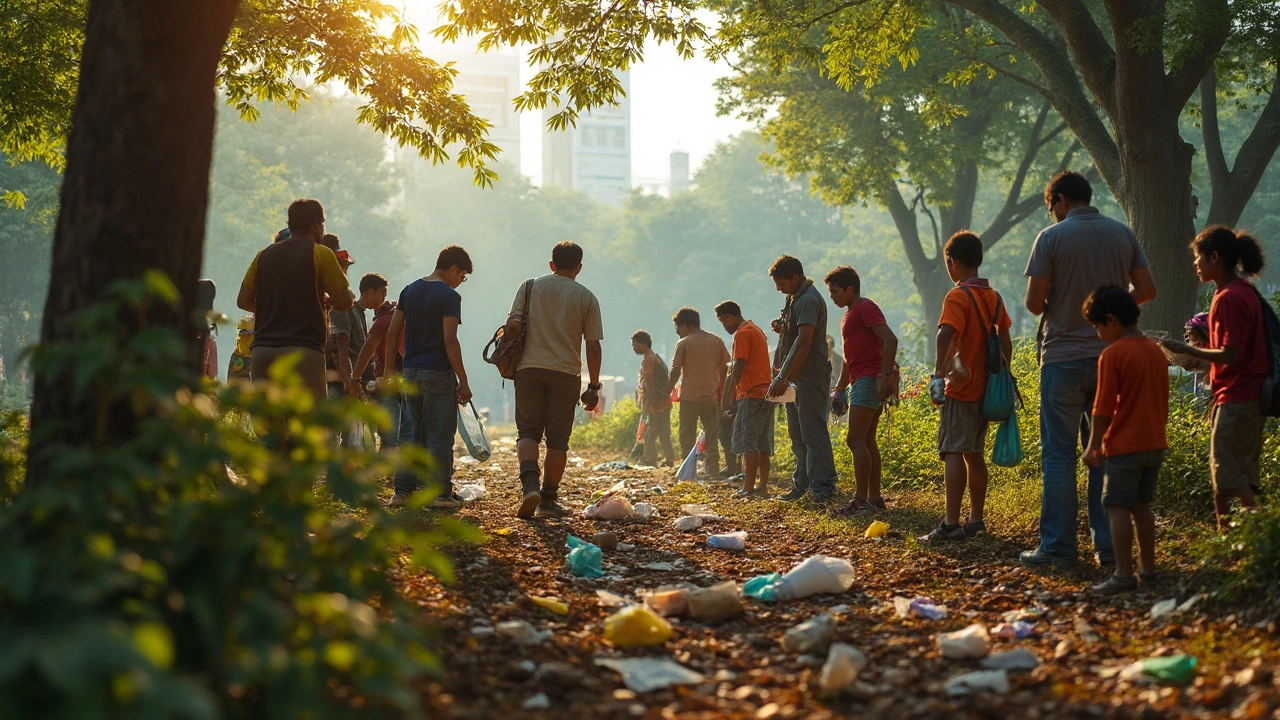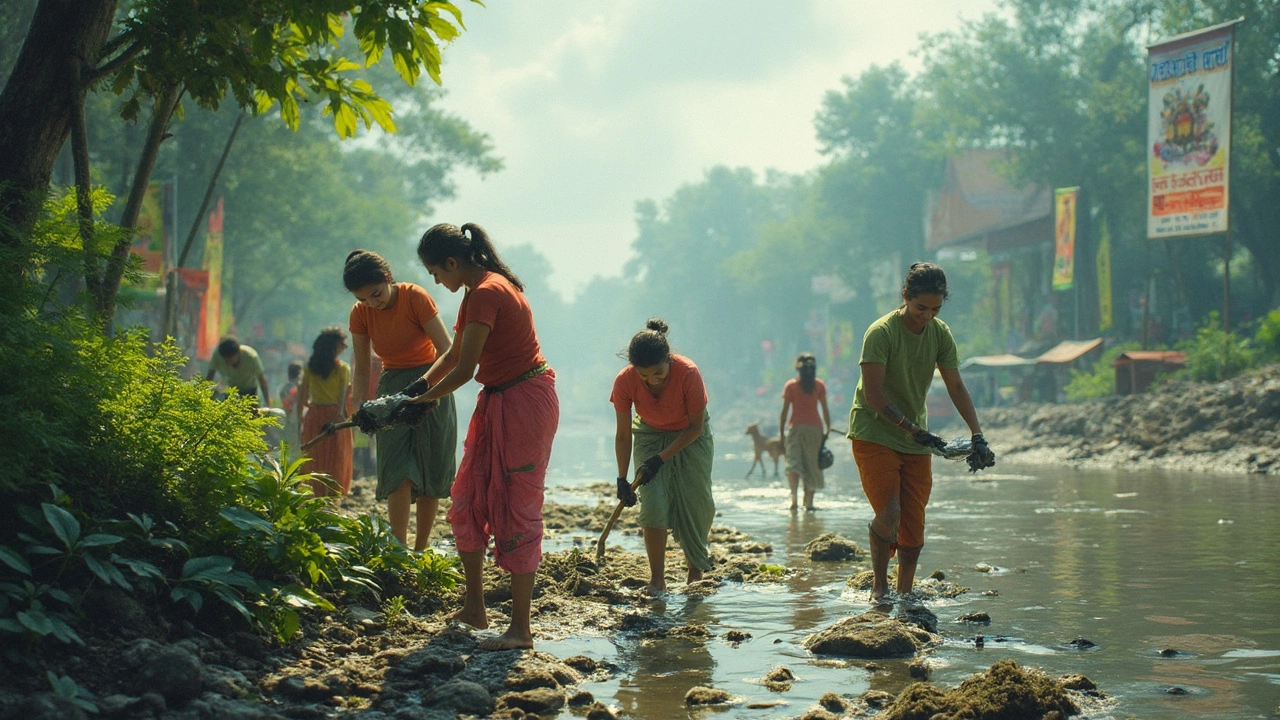If you’ve ever wondered who is out there fighting for the environment, this article breaks down what environmental groups are, how they work, and why they matter. You’ll get the inside scoop on what these groups actually do, see some examples in action, and pick up ideas to get involved yourself. There's a lot more to these organizations than tree planting. By the end, you’ll know exactly how environmental groups can make a real difference—and how you can support them.

- Created by: Lydia Carmichael
- Completed on: 13 Apr 2025
- Categories: Environment
Heard of Greenpeace? If not, you might have seen their bold actions and campaigns making waves in the news. Let me take you on a quick dive into what makes this environmental group stand out. Founded back in 1971, Greenpeace started with a group of activists who were passionate about nuclear disarmament and wanted to protect the environment from destruction. Flash forward to today, and they’ve grown into a powerhouse organization with a presence in over 55 countries!
Greenpeace isn't your typical environmental group—they're famous for using non-violent action to get their message across. They tackle all sorts of environmental issues like deforestation, ocean pollution, and the ever-pressing problem of global warming. They've got a knack for grabbing attention, often putting themselves right in the thick of environmental hotspots to create buzz and awareness.
- Origin and Mission of Greenpeace
- Key Campaigns and Achievements
- How Greenpeace Operates
- Getting Involved with Greenpeace
Origin and Mission of Greenpeace
Greenpeace got its start in the early 1970s, right in the throes of the anti-nuclear movement. It all began with a small group of activists in Vancouver, Canada, who were seriously worried about potential nuclear weapon tests by the United States in Alaska. They weren't just talk; they decided to take action, embarking on a journey aboard a humble fishing boat named the 'Phyllis Cormack' to bear witness to the tests and voice their opposition. This bold move was about peace and protecting our environment from the consequences of nuclear fallout.
As these inspired individuals banded together, they solidified their mission to be changemakers on more than just nuclear issues. The new broader focus included tackling environmental concerns affecting everyday life, like pollution, deforestation, and climate change. Their motto was simple: to bear witness and use non-violent confrontation as a tool for change. This meant not only speaking out but doing so in ways that caught the public and media's attention.
Fast forward to today, and their mission still rings true. Greenpeace seeks to ensure the ability of the Earth to nurture life in all its diversity. They focus on key areas: stopping global warming, protecting ancient forests, saving our oceans, and promoting sustainable agriculture. Their approach combines research, lobbying, and direct action to make these goals a reality.
What keeps them ticking is their fierce independence; they don’t take money from governments or corporations. This helps them push their agenda without strings attached, highlighting their commitment to environmental integrity.
Ultimately, the legacy of that first voyage became an icon for grassroots movements. It shows how passion and determination can grow from a small group on a fishing boat into a global powerhouse like Greenpeace.
Key Campaigns and Achievements
When it comes to making a splash, Greenpeace is no stranger. Over the years, they've launched plenty of game-changing campaigns that have set the bar high for environmental activism. Let's look at some of their most impactful initiatives.
One of their earliest and most famous efforts was the campaign against nuclear testing in Amchitka, Alaska. This was where it all started in 1971. Their peaceful protest against nuclear bombs not only drew attention but successfully put a halt to further tests in the area. This spirit of direct action became a trademark of Greenpeace.
Fast forward to the 1980s, and you'll find Greenpeace at the forefront of the anti-whaling movement. Their brave acts, like placing themselves between whales and harpoons, were significant in influencing the International Whaling Commission, eventually leading to a moratorium on commercial whaling. It was a landmark victory that showcased their dedication to marine conservation.
More recently, Greenpeace has been ramping up their campaigns to fight global warming. Remember the iconic image of activists scaling the UK's Houses of Parliament to protest dirty energy? Yep, that was them, shouting loud and clear for a switch to renewable energy sources.
Here's a snapshot of some impressive numbers:
| Impact | Achievement |
|---|---|
| Deforestation | Raised awareness leading to reduced illegal logging by 60% |
| Global Warming | Advocated for policies resulting in 30% increase in renewable energy investments |
| Ocean Pollution | Spearheaded clean-up campaigns involving over 200,000 volunteers worldwide |
These campaigns not only highlight Greenpeace's fearless nature but also their commitment to real, tangible change. By continuously pushing boundaries and refusing to stand by, they've managed to keep important environmental issues in the public eye and on political agendas worldwide.

How Greenpeace Operates
So, how exactly does Greenpeace pull off these big feats? Well, it all starts with their unique playbook. Greenpeace relies heavily on non-violent direct action to shine a spotlight on environmental wrongdoings. That means you're likely to see their activists out there chaining themselves to oil rigs or staging die-ins to highlight pollution concerns.
But don’t think it's just about dramatic action. Greenpeace also runs extensive research, collecting data to back their campaigns. They maintain a science unit that digs deep into environmental science to bolster their advocacy with hard facts. This mix of bold action and solid research is a big part of why they're so effective.
Funding is always a hot topic. Greenpeace operates entirely on donations from individuals—yep, no government money or corporate cash here, keeping them fiercely independent. This grassroots support allows them to stay true to their mission without outside pressure. An insider explains,
"Our independence is what allows Greenpeace to speak truth to power and advocate for our planet without compromise."
So, what do they do with all this support? They set clear priorities, diving into issues like deforestation, ocean pollution, and more. Each year, they choose specific campaigns to target based on pressing environmental needs and opportunities for impact. These campaigns include everything from pushing for electric cars to standing against single-use plastics.
Greenpeace's global network allows them to be fast and nimble when tackling issues. With offices in over 55 countries, they can adapt campaigns to fit local contexts while maintaining a strong international voice. So, while they might tackle whaling in Japan, they could simultaneously challenge coal use in Germany. This global-local balance is key to their success.
- Non-violent direct action
- In-depth research and science
- Grassroots funding and independence
- Global and local campaign adaptability
And that’s how Greenpeace kicks into gear, blending activism with science, keeping roots deep in community support, and tailoring their approach to make the biggest splash where it counts.
Getting Involved with Greenpeace
If you’re keen to make a difference and join the eco-friendly movement, getting involved with Greenpeace might be easier than you think. They welcome people from all walks of life to contribute in various ways—no superhero skills required!
One of the easiest ways to start is by joining a local Greenpeace group in your area. Just head to their website to find a chapter near you. By joining, you'll be part of community events, cleanup initiatives, or even protests if there's something big happening. These activities are a great way to meet like-minded folks and fuel your passion for the environment.
Not ready for field action yet? No worries! You can always support Greenpeace from the comfort of your home. Consider becoming a monthly donor. Even small contributions can help fund significant global campaigns fighting deforestation or saving the oceans.
Greenpeace also has online petitions you can sign. They frequently launch initiatives to influence policies and regulations. Every signature counts and can make a world of difference.
Feeling creative? Use your voice online! Connect with Greenpeace through social media. Share their content, spread awareness, or even blog about environmental issues. It can be as simple as resharing a post or as involved as writing an informative article.
Finally, what if you just want to learn more before diving in? Check out their webinars and training programs. There’s always something going on where you can learn about the latest environmental challenges and solutions being worked on.
- Join a local group
- Become a donor
- Sign petitions
- Engage on social media
- Attend webinars and training
So, whether it’s through direct action, financial support, or helping spread the word, there’s a place for everyone in the environmental movement. Greenpeace makes sure that getting involved is as accessible and rewarding as possible, one meaningful step at a time.
Wondering which environmental groups actually do something? This article breaks down how to spot real action-takers versus loud talkers, and shares tips for getting involved whether you like to join big organizations or prefer hands-on community groups. Learn where your efforts and donations go furthest, and get inspired by success stories you might not know. If the planet’s future matters to you, you’ll find concrete steps here.
Greenpeace is a renowned environmental group known for its bold actions and campaigns to protect the earth. Founded in 1971, this international organization tackles issues like deforestation, global warming, and ocean pollution. With a presence in over 55 countries, Greenpeace uses non-violent confrontation to raise awareness and bring about change. This article explores their key initiatives and how individuals can get involved with their efforts.

